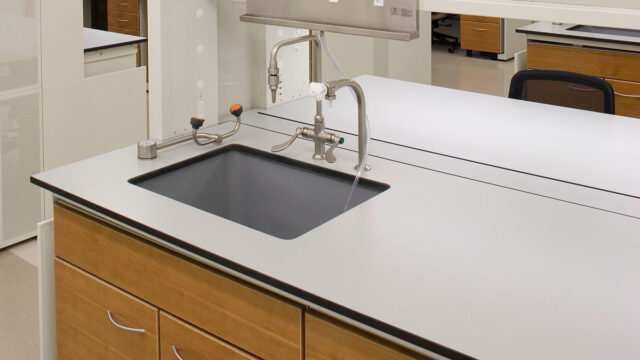
An undermount epoxy sink is a modern and stylish kitchen fixture that has gained popularity in recent years. Combining durability, aesthetics, and functionality, this type of sink offers several advantages over traditional sink materials like stainless steel or porcelain. In this article, we will explore the features, benefits, installation process, and maintenance tips for undermount epoxy sinks.
Features of Undermount Epoxy Sinks
Undermount epoxy sinks are made from a combination of epoxy resin and various fillers, resulting in a solid and non-porous material. Some key features of these sinks include:
Durability: Epoxy sinks are highly durable and resistant to chipping, scratching, and staining. They can withstand heavy daily use and are less prone to damage compared to other sink materials.
Design Flexibility: Epoxy sinks are available in a variety of shapes, sizes, and colors, allowing homeowners to customize their kitchen design. Whether you prefer a sleek and modern look or a more traditional style, epoxy sinks can complement any kitchen aesthetic.
Seamless Installation: Undermount epoxy sinks are installed beneath the countertop, creating a seamless and sleek appearance. This installation method also makes cleaning the countertop surface easier since there are no raised edges or seams.
Benefits of Undermount Epoxy Sinks

Choosing an undermount epoxy sink for your kitchen offers several benefits:
Hygiene and Maintenance: The non-porous surface of epoxy sinks makes them highly resistant to bacteria growth and staining. They are easy to clean and require minimal maintenance, providing a more hygienic environment in your kitchen.
Noise Reduction: The epoxy material absorbs sound vibrations, resulting in a quieter kitchen environment compared to stainless steel or porcelain sinks. This can be particularly advantageous if you have an open-plan kitchen or if noise reduction is a priority for you.
Heat Resistance: Epoxy sinks can withstand high temperatures, making them suitable for placing hot pots and pans directly into the sink without causing damage. This heat resistance adds convenience and versatility to your kitchen activities.
Installation Process
Installing an undermount epoxy sink requires professional expertise.
Here are the general steps involved:
Sink Preparation: Ensure the sink cutout in the countertop matches the dimensions of the epoxy sink. Clean the sink and remove any protective coatings or stickers.
Apply Adhesive: Use a suitable epoxy adhesive recommended by the sink manufacturer. Apply the adhesive on the sink flange and the underside of the countertop where the sink will be installed.
Position and Secure the Sink: Carefully lower the sink into the cutout opening, ensuring proper alignment. Secure the sink in place using clips or brackets provided by the manufacturer.
Seal the Sink: Apply a waterproof silicone sealant along the edges of the sink to create a watertight seal between the sink and the countertop.
Cost of Undermount Epoxy Sinks

Investing in an undermount epoxy sink can be more economical than you might imagine. While costs can vary depending on size, design, and retailer, on average, you’re looking at a price range between $200 to $600. Compared to stainless steel or porcelain sinks, these sinks offer a competitive price point with a similar range. When considering a kitchen renovation, keep in mind the long-term value offered by the anmed sinks. Their exceptional durability and easy maintenance can result in fewer replacements and repairs over time, making them a cost-effective solution for homeowners seeking to combine style, functionality, and economy in their kitchen fixtures.
Long-term Durability
One of the standout features of undermount epoxy sinks is their superb long-term durability. Unlike other materials, this material is highly resistant to wear and tear, and its color doesn’t fade, even after prolonged use. It’s also remarkably resistant to cracking and discoloration, meaning it maintains its appearance over time. Even if you’re a fan of hot pans or cold drinks, the named material withstands extreme temperatures without warping or tarnishing. The robust nature of undermount epoxy sinks ensures they remain a staple in your kitchen for years to come, retaining their aesthetic appeal while offering consistent functionality.
Environmental Impact

When it comes to environmental considerations, undermount epoxy sinks have their advantages. While not made from recycled materials, this resin production generates less waste than many traditional sink materials. Additionally, they sinks have a longer lifespan, reducing the need for replacement and associated waste. However, epoxy is not easily recyclable at the end of its life, which is a point to consider for the eco-conscious consumer. Companies are researching and developing more sustainable epoxy alternatives to enhance their eco-friendliness. As of now, the durability and longevity of these sinks offer a way to mitigate their environmental impact.
Design Limitations
While undermount epoxy sinks offer substantial design flexibility, they do come with certain limitations. The strength of epoxy allows for a broad range of sink sizes, but extremely large or unconventional shapes might not be possible due to structural considerations. Similarly, although the named sinks work well with most countertop materials, issues can arise with tiled or laminate surfaces, which may not support the weight of an undermount sink. It’s always advisable to consult with a professional when choosing your sink to ensure its compatibility with your existing or planned kitchen design. Despite these considerations, the versatility of these sinks can cater to a diverse range of aesthetic preferences and functional requirements.
Maintenance Tips

To keep your undermount epoxy sink in optimal condition, consider the following maintenance tips:
Regular Cleaning: To maintain the sink’s cleanliness, utilize a gentle non-abrasive cleanser along with a soft cloth or sponge. It is advisable to steer clear of harsh chemicals or abrasive scrubbers that might harm the sink’s surface.
Preventing Stains and Scratches: Use cutting boards and trivets to avoid direct contact between sharp objects and the sink surface. Promptly clean any spills or stains to prevent them from settling into the sink material.
Avoid Extreme Temperatures: While epoxy sinks possess heat resistance, it is advisable to refrain from subjecting them to drastic temperature fluctuations. To prevent thermal shock, employ hot pads or trivets when placing hot objects in the sink.
Conclusion
An undermount epoxy sink offers a contemporary and durable option for modern kitchens. With its unique features, easy maintenance, and a range of design possibilities, this sink type has become increasingly popular among homeowners. By understanding its features, benefits, installation process, and maintenance tips, you can make an informed decision when considering an undermount epoxy sink for your kitchen upgrade.









